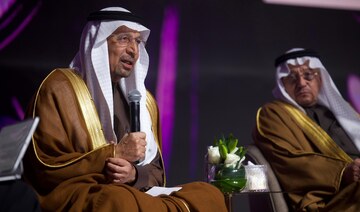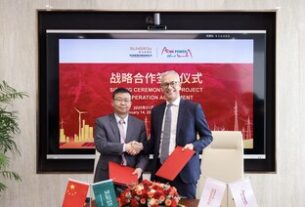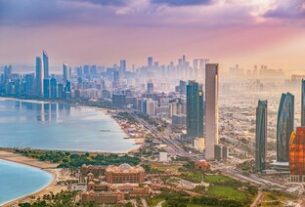Saudi Arabia is stepping up its effort to attract foreign small and medium-sized enterprises by de-risking investments and creating a friendlier business climate, a move designed to bring international SMEs into the Kingdom’s expanding industrial landscape. The plan, unveiled on the sidelines of the Standard Incentives for the Industrial Sector program, is spearheaded by Khalid Al-Falih, Saudi Arabia’s Minister of Investment. Al-Falih emphasized that the initiative seeks to draw international SMEs that have long been integral to global supply chains and to integrate them into Saudi Arabia’s growing industrial ecosystem. The government’s approach aims to translate global SME capabilities into local value, enabling domestic suppliers to collaborate with seasoned international players and to accelerate innovation within Saudi markets.
Context and Strategic Purpose
The newly articulated program is part of a broader effort to diversify the Saudi economy and reduce its exposure to oil market fluctuations by scaling up non-oil sectors, notably industry and manufacturing. The initiative underscores the Kingdom’s commitment to creating a predictable, secure, and competitive environment for foreign investors, particularly mid-sized enterprises that may have previously faced barriers to entry. The program’s alignment with national economic objectives is evident in its emphasis on standardized incentives designed to catalyze industrial activity, streamline regulatory processes, and shorten the path from investment to operation. By focusing on mid-sized firms, the Kingdom aims to complement its existing heavy investment in large multinationals and multibillion-dollar flagship projects, while ensuring broader participation across the SME spectrum. This approach is framed as a strategic step toward developing indigenous capabilities, expanding job opportunities, and reinforcing Saudi Arabia’s position as a regional hub for advanced manufacturing and technology-driven industries.
Historically, Saudi Arabia has attracted large multinational investments in landmark projects such as green hydrogen initiatives, advanced automotive startups, and energy storage ventures. However, mid-sized international SMEs often encounter structural obstacles—ranging from limited local supplier networks to insufficient credit history and higher relative costs—that impede their ability to scale in new markets. The current initiative explicitly targets these gaps by offering de-risked investment pathways, enhanced access to local partner networks, and faster onboarding into Saudi supply chains. In doing so, the program seeks to build a robust, interconnected value chain that links international SMEs with Saudi firms, accelerates localization efforts, and fosters sustainable development across multiple industrial subsectors. The Cabinet’s recent approval of the standardized incentive framework provides the policy backbone for these activities, signaling political consensus around a more inclusive investment strategy.
The De-Risking Core: What It Means in Practice
De-risking stands at the heart of the policy and is presented as a defining feature that lowers barriers to entry for foreign SMEs. The minister’s phrasing—“De-risking is a key component. Come to Saudi Arabia. We will de-risk the investment for you”—captures a commitment to reducing risks that typically deter mid-sized international players. In practical terms, de-risking can encompass a mix of government-backed guarantees, streamlined licensing and regulatory processes, and tailored financial support designed to bridge early-stage funding gaps. The approach also envisions active matchmaking between foreign SMEs and Saudi investors, enabling partners to explore joint ventures, technology transfer, and scalable production arrangements that align with shared growth objectives.
The matchmaking component has a dual purpose. First, it helps international SMEs identify Saudi partners with complementary capabilities, whether in procurement, distribution, or niche manufacturing segments. Second, it creates a collaborative channel through which Saudi investors can co-create, co-invest, and co-innovate with foreign peers to address unmet demand in home markets and in the Middle East and North Africa region. The expectation is that this collaborative model will lead to the replication of successful strategies abroad within the Saudi context, while also enabling innovators to customize offerings to local needs. As Al-Falih noted, the ultimate aim is not merely to bring foreign capital into Saudi projects, but to catalyze joint ventures that can scale beyond Saudi borders, leveraging the Kingdom as a springboard for broader regional growth.
Investment Allocation: The SR10 Billion Incentive Pool
A cornerstone of the policy is a dedicated funding commitment to activate standardized incentives for the industrial sector. The program allocates a substantial sum—SR10 billion (roughly $2.66 billion)—to drive industrial incentives under the new framework. This capital is intended to accelerate investment activities, reduce the cost of capital for qualifying projects, and catalyze the development of critical supply chain linkages between international SMEs and local firms. The Cabinet’s approval of this framework underscores a top-tier policy endorsement, signaling long-term financial planning that supports industrial expansion and sustainable growth across multiple domains of manufacturing and technology-enabled sectors.
This financial envelope is designed to be flexible enough to accommodate a wide array of investments, including those in advanced manufacturing, equipment modernization, and process innovation that can plug gaps within existing value chains. By providing a predictable funding stream, the Kingdom seeks to attract SMEs that may previously have hesitated due to concerns about funding reliability or the ability to scale operations quickly. The goal is to create a virtuous cycle: once foreign SMEs invest and establish production lines, they stimulate downstream activity among local suppliers, increase domestic procurement opportunities, and foster knowledge transfer that elevates the overall competitiveness of the Saudi industrial base. In addition, the incentives are structured to be accessible to a broad spectrum of mid-sized enterprises, ensuring that the policy does not disproportionately favor large, already-established foreign corporations.
Building Value Chains: Collaboration Between International and Local SMEs
A central objective of the initiative is to build resilient value chains by encouraging international SMEs to collaborate with local Saudi firms. This collaboration is expected to fuel innovation and shared growth, resulting in a more integrated, efficient industrial ecosystem. The strategy recognizes that robust value chains are formed not only through large-scale investment but also through the synergies created when global capabilities are embedded within local contexts. International SMEs can introduce advanced manufacturing techniques, cutting-edge process improvements, and new product configurations that address regional demand while enabling Saudi participants to upskill and upgrade domestic capabilities.
Al-Falih stressed that there has been considerable success in attracting large multinationals to Saudi Arabia. Yet he argued that we must broaden the ecosystem by incorporating SMEs from Germany and other global hubs, particularly those whose GDP contribution comes predominantly from their SME sectors. The emphasis on SMEs reflects a deliberate shift toward diversifying the base of economic activity and reducing dependence on any single sector or company. The envisioned value chains would connect international producers with Saudi original equipment manufacturers (OEMs) and local suppliers, ensuring a flow of technology transfer and knowledge exchange that enhances productivity and innovation across all participants. In this framework, both sides stand to gain: foreign SMEs gain access to Saudi markets and regional demand growth, while Saudi firms gain access to global supply networks, best practices, and scale advantages.
The International-SME Ecosystem in Saudi Arabia: Context and Comparisons
Al-Falih contrasted Saudi Arabia’s industrial landscape with the broader global SME ecosystem to illustrate the opportunity. He pointed out that while the Kingdom has excelled at attracting major multinational corporations, much of the global SME economy—exemplified by Germany’s large SME sector—depends on domestic ecosystems that many foreign companies do not yet know well enough to access. The observation underscores the imperative of education, outreach, and practical onboarding to help international SMEs understand and navigate the Middle East market, and Saudi Arabia’s regulatory and commercial terrain. By positioning itself as a gateway to the broader Middle East and North Africa region, Saudi Arabia aims to attract SMEs whose products and manufacturing capabilities can be customized for regional demand while leveraging Saudi port access, logistics infrastructure, and tariff policies to reduce delivery times and costs.
In practical terms, the Kingdom seeks to pair large OEMs with SMEs that can supply critical components, subassemblies, and specialized services, thereby feeding a broader ecosystem that stretches across multiple industry verticals. This approach enhances the resilience of supply chains that have historically depended on a limited number of large players by broadening participation and localizing more of the production process. The strategic intent is to develop a more diverse industrial base capable of sustaining high growth, reducing import dependence for critical goods, and enabling Saudi Arabia to play a central role in regional manufacturing networks. The emphasis on integrating international SMEs with local capabilities is designed to create a more dynamic, export-oriented industrial sector that can compete on a global stage.
Challenges Facing Mid-Sized International Firms and How the Initiative Addresses Them
Mid-sized international firms often confront distinctive challenges when entering new markets, particularly in sectors requiring complex regulatory compliance, long lead times for capital deployment, and the necessity of building local supply chains from the ground up. Al-Falih highlighted two parallel realities: the Kingdom’s success in attracting large-scale investments and the comparatively higher barriers that mid-sized companies encounter. The new program is crafted to respond to these realities by offering targeted support that reduces friction in the entry and expansion processes. Specific challenges addressed include lack of established credit history, scarcity of a well-developed local ecosystem to support early-phase operations, and rising costs associated with funding and production in a foreign market. The de-risking approach, combined with dedicated matchmaking and financial incentives, seeks to close these gaps and create a smoother path for mid-sized international companies to establish operations and scale quickly within Saudi Arabia.
By providing a structured pathway—one that includes de-risked investment terms, access to local partner networks, and alignment with national economic goals—the policy intends to accelerate the time-to-value for these firms. This is critical for mid-sized players that must achieve early momentum to justify ongoing investment. The framework also emphasizes collaboration with local enterprises, which can facilitate faster market entry by leveraging existing distribution channels, regulatory know-how, and customer relationships that Saudi firms have cultivated over years of market activity. The broader objective is to ensure that the introduction of international SMEs translates into long-term capabilities within the Kingdom, with measurable improvements in productivity, innovation, and job creation across multiple industrial sectors.
Geographic Advantage, Trade Facilitation, and Market Access
Saudi Arabia’s geographic location is a pivotal strategic asset in the plan. The Kingdom sits at the crossroads of three continents, offering a unique access point to Asian, European, and African markets. This geographic advantage helps reduce transit times and logistics costs for international supply chains, enabling foreign SMEs to serve a broad regional customer base with greater efficiency. The country’s open market policies, combined with relatively low customs tariffs, further enhance its attractiveness to investors seeking favorable cost structures and easy market entry. The policy framework is crafted to capitalize on these geopolitical and economic realities by creating a seamless interface for foreign SMEs to establish production sites, source components locally, and export finished goods to regional markets with minimal friction.
Beyond mere location, the incentives program is designed to be compatible with Saudi Arabia’s broader economic policy framework, including reforms aimed at improving ease of doing business, simplifying licensing procedures, and creating a transparent regulatory environment. This alignment ensures that foreign SMEs can navigate the Kingdom’s administrative landscape with confidence and predictability, a critical factor in project planning and capital expenditure decisions. The initiative also dovetails with the Kingdom’s intent to become a regional hub for advanced manufacturing, clean energy technology, and precision engineering, sectors in which international SMEs frequently bring specialized capabilities that can catalyze domestic innovation and knowledge transfer.
Governance, Localization, and Strategic Alignment with Vision 2030
The program aligns with Saudi Arabia’s collaborative government approach, wherein policy is shaped by cross-ministerial committees and strategic planning bodies. The Localization and Balance of Payments Committee, chaired by Crown Prince Mohammed bin Salman, plays a central role in guiding investment decisions and ensuring that foreign participation translates into tangible local benefits. This governance structure reflects a coherent, long-term strategy to maximize domestic value creation, optimize foreign capital inflows, and advance the broader objectives of Vision 2030. The strategic emphasis is on using international investment to upgrade the Kingdom’s industrial capabilities, enhance local procurement power, and reduce import reliance by expanding domestic production capacity across key sectors.
In parallel, the National Investment Strategy provides the overarching framework for attracting and developing industrial investments that contribute to structural economic transformation. The combination of centralized policy oversight, standardized incentives, and robust monitoring mechanisms is designed to ensure that investments align with national priorities, deliver measurable economic impact, and support sustainable development goals. The policy also underscores the importance of building a diversified industrial ecosystem capable of competing on a global scale while fostering meaningful collaboration between international SMEs and Saudi enterprises. These governance and policy elements collectively reinforce the Kingdom’s ambition to elevate its industrial competitiveness on the world stage.
Implications for International Investors and Saudi Economic Diversification
For global investors, the de-risking initiative signals a more predictable and supportive operating environment in which the risks of market entry can be meaningfully mitigated. The finance and regulatory reforms, coupled with a substantial incentive pool, create a compelling case for mid-sized international SMEs to consider Saudi Arabia not merely as a local market but as a base for regional manufacturing, distribution, and value-added activities. The program’s emphasis on value-chain integration supports a business model that emphasizes collaboration with Saudi firms, technology transfer, and capability upgrading, which in turn can lead to sustained growth, job creation, and heightened competitiveness for all participants.
From a broader national perspective, the initiative is a concrete step toward diversification and resilience. By broadening the portfolio of industrial activities and encouraging SME participation, Saudi Arabia aims to reduce economic concentration risk and create a broader tax base, while also strengthening the supply networks that underpin strategic industries. The presence of international SMEs in Saudi markets can stimulate local entrepreneurship, drive innovation, and enable the Kingdom to attract downstream investment in related sectors such as logistics, maintenance services, and after-sales support. The long-term outcome envisaged by policymakers is a more dynamic, knowledge-intensive industrial ecosystem that can compete in global markets, support Vision 2030’s objectives, and reinforce the Kingdom’s position as a regional and international investment destination.
Implementation Roadmap, Monitoring, and Expected Milestones
Implementation of the standardized incentive framework requires careful sequencing, robust governance, and precise performance metrics. The Cabinet-approved plan provides the policy articulation, while the ministries of Industry and Mineral Resources, Investment, and other relevant agencies are expected to coordinate the rollout. The roadmap would typically include stages such as policy finalization, stakeholder consultations, eligibility criteria development, and pilot projects with select international SMEs and Saudi partners. As projects move from pilots to scale, the monitoring framework will track key indicators including capital deployment, job creation, local procurement share, technology transfer milestones, and improvements in domestic productivity. A transparent reporting regime will be essential to validate the efficacy of the incentives, identify bottlenecks, and guide course corrections.
To ensure rapid mobilization, the government intends to facilitate matchmaking, provide clear regulatory guidance, and offer financial instruments tailored to the scale and risk profile of participating SMEs. The emphasis on speed-to-market must be balanced with thorough due diligence and governance to protect public resources while enabling agile investment flows. The policy’s success will hinge on the Kingdom’s ability to create a supportive ecosystem that shortens the path from investment to operational profitability, with ongoing collaboration between international investors and local enterprises to adapt to evolving market conditions. In practice, success will be measured by the number of active joint ventures formed, the volume of Saudi-originated value added, supplier development outcomes, and the sustained growth of local industry clusters around the most promising value chains.
Risks, Mitigation Strategies, and Long-Term Outlook
Any large-scale investment program of this nature carries risks, including global macroeconomic volatility, shifts in demand, regulatory changes, and integration challenges across cross-border partnerships. The de-risking framework must anticipate such uncertainties and incorporate robust mitigation strategies. Potential risks include delays in project approvals, misalignment between foreign SMEs’ capabilities and local market needs, and potential competition among international firms for limited local opportunities. Mitigation measures may include tiered incentives aligned with project risk, ongoing regulatory reforms to streamline licensing and approvals, enhanced due diligence processes, and proactive support for capacity building among Saudi SMEs to ensure they can absorb new technologies and processes.
Looking ahead, the initiative’s long-term impact will be determined by its ability to catalyze scalable, export-oriented manufacturing, accelerate knowledge transfer, and create sustainable employment opportunities across the Kingdom. If successful, the program could serve as a blueprint for similar de-risking and collaboration models in other sectors, reinforcing Saudi Arabia’s strategic objective to diversify the economy, strengthen industrial competitiveness, and deliver resilient economic growth aligned with Vision 2030 and the National Investment Strategy. The government’s measured combination of financial incentives, policy alignment, and active industry collaboration positions the Kingdom to leverage its geographic advantages, develop robust value chains, and support the emergence of a more inclusive, innovation-driven industrial ecosystem.
Conclusion
Saudi Arabia’s proactive push to de-risk investments for foreign SMEs marks a defining moment in the Kingdom’s industrial evolution. By combining substantial financial incentives, structured risk mitigation, targeted matchmaking, and a clear commitment to value-chain development, the initiative seeks to attract mid-sized international players that can accelerate local modernization while enriching regional supply networks. The Cabinet-approved program, anchored by the SR10 billion incentive pool, positions the Kingdom to advance its Vision 2030 objectives and National Investment Strategy by building a more diversified, competitive industrial base. The government’s emphasis on collaboration between international SMEs and Saudi firms—supported by a robust governance framework and strategic localization goals—aims to create sustainable growth, job creation, and knowledge transfer that extend beyond immediate project outcomes. In this context, Saudi Arabia envisions itself as a dynamic, globally interconnected hub for advanced manufacturing and industrial innovation, where global SMEs can establish a strong presence, contribute to regional development, and participate in long-term value creation that benefits both the Kingdom and the broader global economy.


